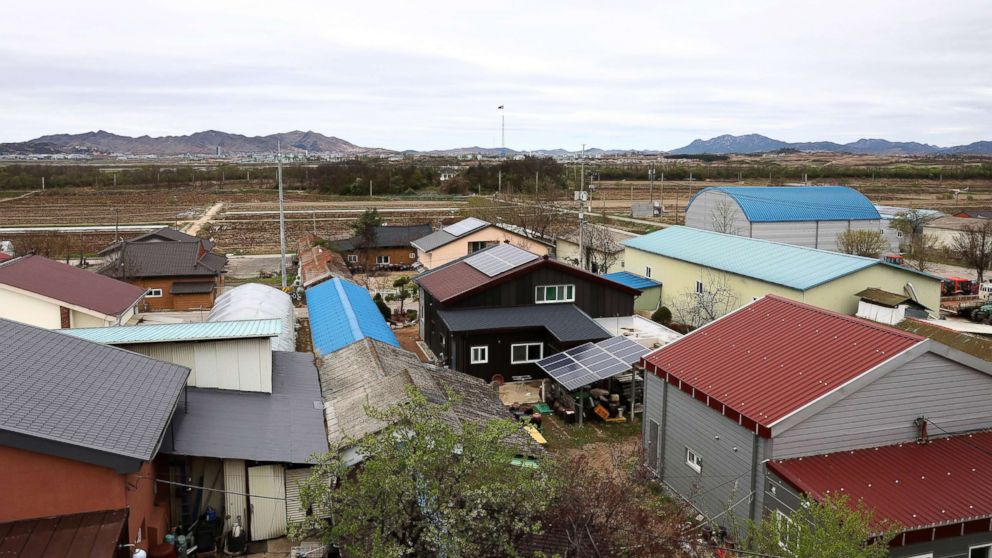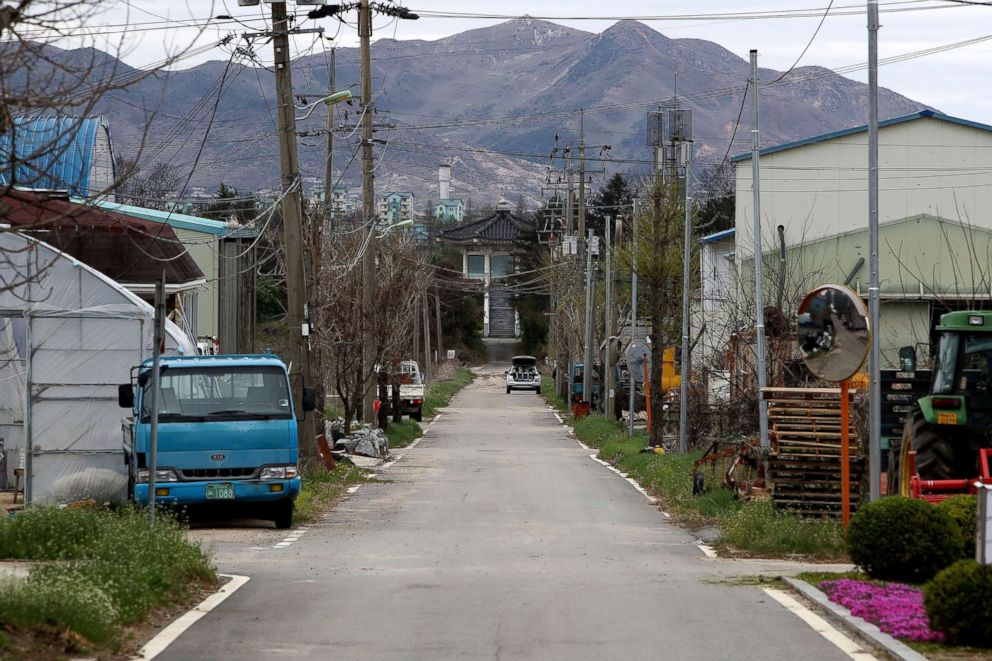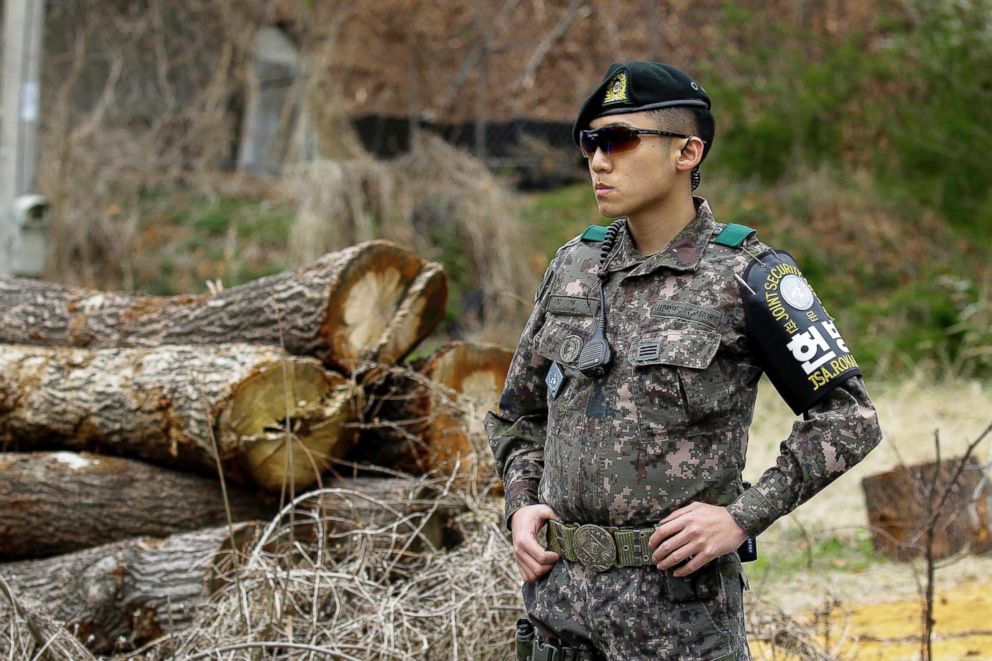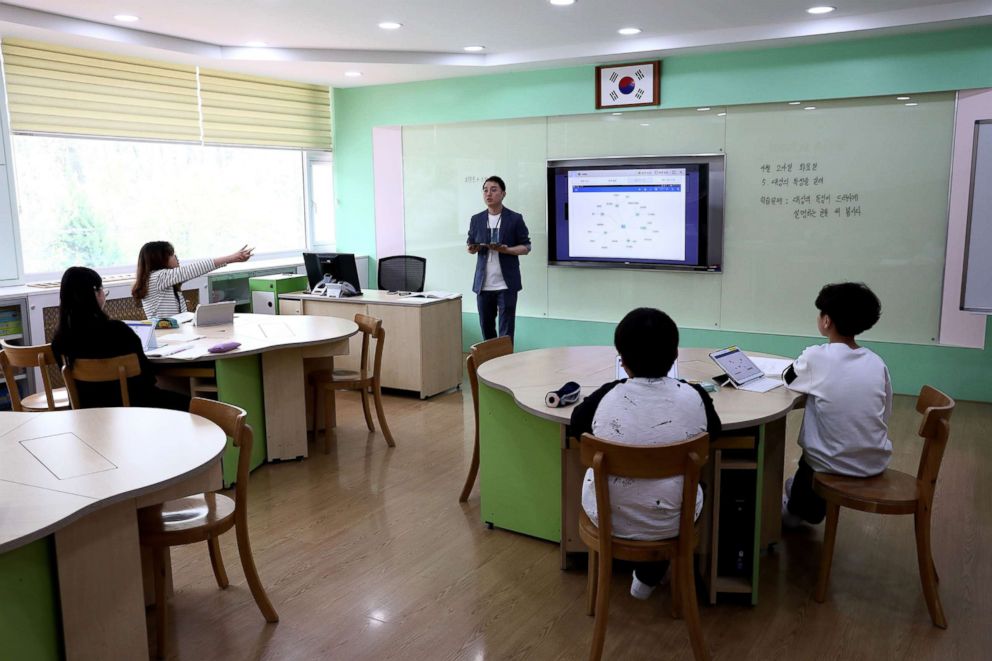Hostage To Conflict
"This is more useful than my own children, who all live outside [the Korean Demilitarized Zone separating North and South]."
"There is no use calling 911, because they can't come here [in the case of emergencies]."
Go Geum-sik, 73, Taesung Freedom Village, South Korea
"Don't let appearances fool you."
"It's not your average place. It's a place where all the peace is secured by dedicated soldiers [despite the hope of eased tensions]."
Chun In-bum, retired South Korean Army general
"Despite political leaders talking about easing tensions, we still live with them as the militaries face off with each other."
Kim Yong-sung, 49, village bean farmer
 |
| South Korea's Taesung Freedom village, April 24, 2018, in Paju, South Korea .Chung Sung-Jun/Getty Images |
There is the village with its enclosed, protective status, and there is "outside". The South Korean government thought of ways indicating special status that would seem attractive to villagers to compensate for their remote isolation, living their lives in a seriously dangerous climate of intimidation. And so, men living in Taesung Freedom Village are exempted from military service. The 46 households receive the benefit of special tax cuts.
The Freedom Village is located within the heavily armed Demilitarized Zone, a bit of irony right there.... The village residents represent the only place where South Korean civilians live within that zone separating South from North. Another gift to the villagers recently came their way when KT Corp., South Korea's major mobile phone carrier, installed a fifth-generation ultrafast communications network there, one of the first such networks in fact, in South Korea.
 |
| Chung Sung-Jun/Getty Images |
People now are able to simply push a button to communicate, should a medical or any other type of emergency arise. That would put them directly and instantly through to the mayor, and to the community center, among others.
The Demilitarized Zone was created as a bridging gap to keep the two warring armies at a distance from one another in 1953, representing a truce, for neither 'surrendered' to the other. Ever since, the South has yearned for re-unification as it went on its democratic free-enterprise capitalist system becoming wealthy over the years, and the North became ever more rigid in its Communist idealism, becoming more poverty-stricken as time went on.
Villagers who once lived within the four-kilometer-wide buffer zone, representing the world's most heavily fortified frontiers punctuated with minefields and sealed off, where battle-ready troops stand at the ready on both sides, were cleared away, with only two villages permitted to remain: Taesung in the South Korean half of the DMZ and across the border, the North Korean Kijong village, with no communication permitted between them. 82-year-pld Park Pil-seon, living in Taesung, cannot see his brother in Kijong, much less know whether he is still alive.
Both towns were pawns in a propaganda war, both Koreas investing in 'model villages' enabling them to extol the virtues of their political systems, so adverse to one another. Kijong at the present time, is almost abandoned, with Taesung remaining a going concern. Villagers in Taesung, however, are not free to do whatever they wish, bearing little resemblance to other South Korean villages there freedom is taken for granted. Their security must be assured by the presence of the military.
 |
| Ryu Seung-il/Polaris |
Each time they plan to venture to their rice paddies close by the borderline, South Korean soldiers shadow them. There is a midnight-to-sunrise curfew, and a nightly roll-call. Should they invite friends from outside the DMZ to visit, an application for approval two weeks in advance must be obtained. All visitors must be escorted by soldiers. There is no hospital, no supermarket, no restaurant in the village, though a bus arrives four times daily.
The new 5G service will ease some of the villagers' irritations as when before its arrival, rice farmers had to ask for a military escort to enable them to make use of a water pump, and now this can be done through an app on their smartphones. The same app can control the sprinklers in their bean patches. Village women who had for years been interested in taking yoga classes can now access lessons streamed at the community center. The sole school now offers interactive online games for students.
 |
| South Korean children take a class at the Taesung elementary school, April 24, 2018, in Paju, South Korea.Chung Sung-Jun/Getty Images |
Students attending the school enjoy the benefits of a high teacher-student ratio, with 21 teachers and staff for 35 pupils, some of whom are bused in daily from Munsan, the town closest outside the DMZ. Decades earlier, villagers were in constant danger of stepping on stray mines left over from the war. There was, in addition, danger of abductions by North Korean soldiers. During times of high tensions villagers were evacuated frequently from their fields into underground shelters. Twice yearly evacuations are still conducted.
Labels: Demilitarized Zone, Freedom Village, South Korea
0 Comments:
Post a Comment
<< Home